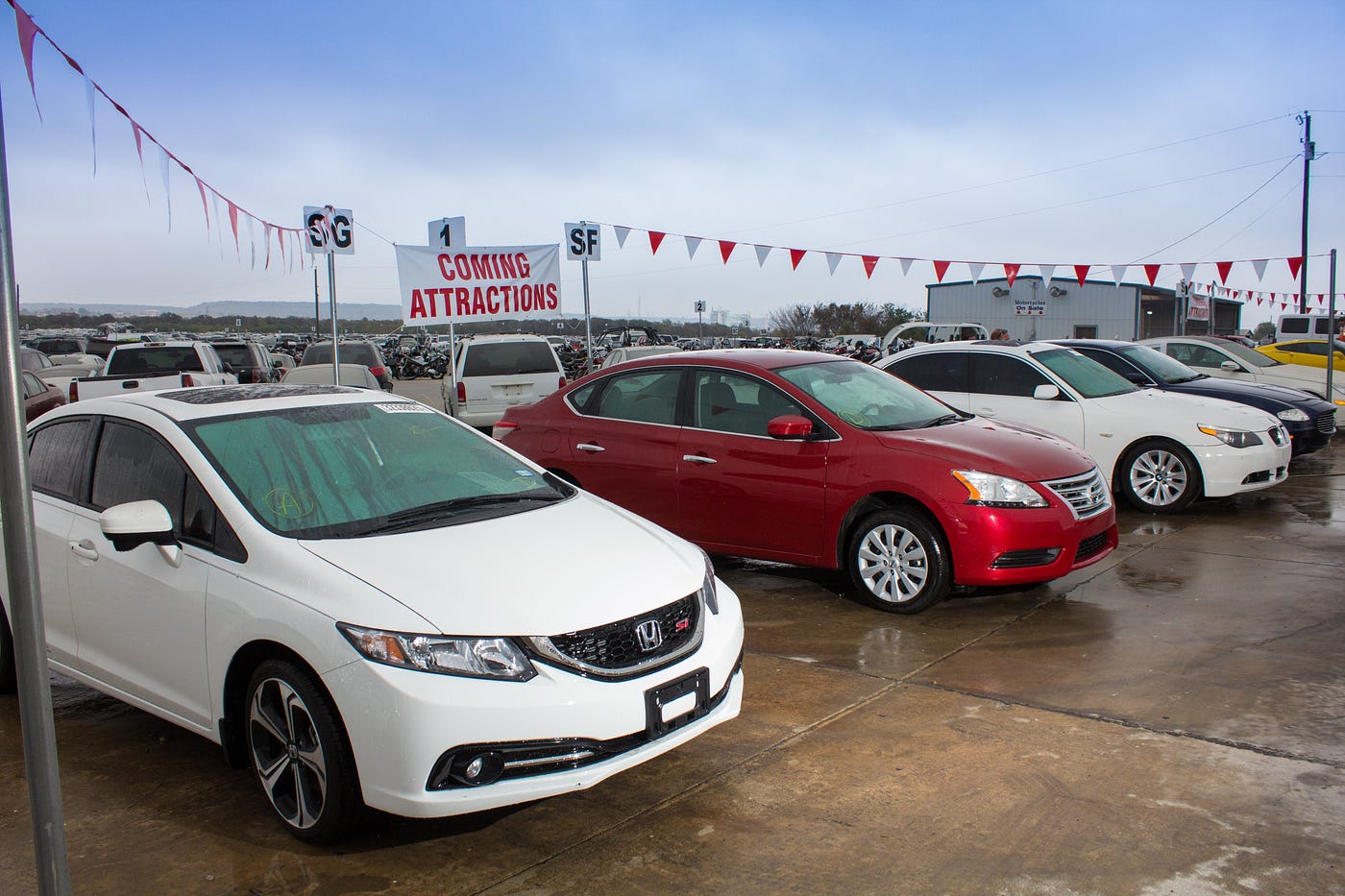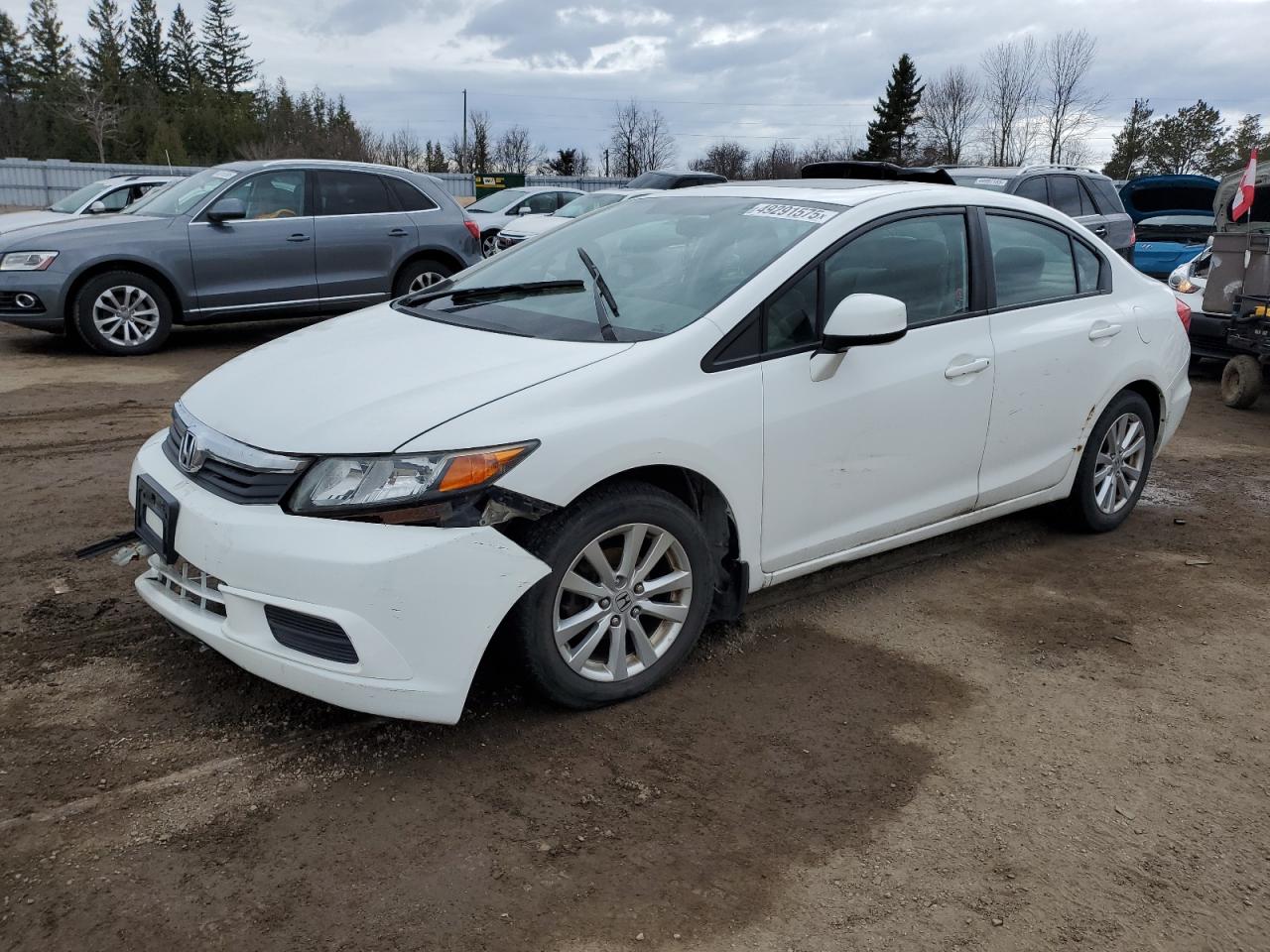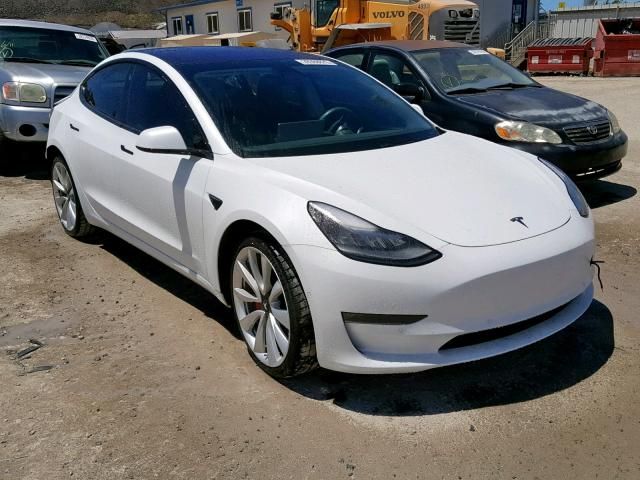The rise of Direct Buy and non-traditional remarketing channels is transforming the economics of salvage auctions — and the implications go far beyond Copart and IAA.
For decades, salvage auctions were defined by a familiar rhythm: damaged and totaled vehicles consigned by insurers, listed online, bid upon by dealers, rebuilders, dismantlers, and exporters, then sold to the highest bidder. It was a predictable process, one that scaled globally as online platforms like Copart and IAA replaced live lanes with digital auctions.
But the model is shifting.
Over the past three years, both giants have rolled out Direct Buy channels — fixed-price sales and “instant-purchase” options designed to clear inventory faster, particularly for lower-value units. This is not a cosmetic tweak; it’s a structural change in how salvage is monetized.
Copart flagged these transitions in its 2025 earnings call, noting that declines in purchase-unit volumes reflected a deliberate shift into Direct Buy channels. At first glance, it might sound like a minor efficiency play. But beneath the surface, the shift is being driven by deep currents: repair complexity, EV penetration, global buyer behavior, insurer cost pressures, and the economics of aging vehicle fleets.
To understand where this is going, we need to unpack the old model, why it’s bending, and what the new one means.
Traditional Auction Economics — A Quick Primer
In the legacy model, an insurer consigns a total-loss car to Copart or IAA. The platform stores, lists, and auctions it, typically charging both a seller fee and buyer fee. For high-value vehicles, competitive bidding drives strong salvage recovery, sometimes recouping 40–50% of the pre-accident value.
For low-value or heavily damaged units, recovery is much weaker, and the costs of storage, transport, and auction operations can eat away at margins. Scale was the solution: Copart’s massive yards and digital buyer base (over 750,000 registered members globally) allowed it to turn vehicles quickly. The formula worked, but cracks started to appear — especially at the low end of the value spectrum.
Enter Direct Buy: Faster Liquidity for Lower-Value Units
The logic behind Direct Buy is simple: if a 15-year-old Corolla with 200,000 miles floods an auction queue, waiting for bids may not justify the overhead. Instead, platforms offer buyers the chance to purchase instantly at a preset price. This speeds up cycle times, reduces storage costs, and appeals to buyers in markets where predictability matters more than auction drama.
For Copart, the Direct Buy pivot in 2025 was particularly aimed at “low-value vehicles,” allowing them to free up yard space for higher-margin inventory. IAA has been experimenting with similar concepts, layering in fixed-price sales and “buy now” features to supplement core auctions.
Why the Shift Is Happening Now
A profound shift is reshaping the automotive salvage industry, driven by the convergence of several powerful structural forces that are making "Direct Buy" options increasingly attractive. This change is happening now because the very nature of the cars being wrecked and the economic pressures on insurers are aligning to create a perfect storm.
The foundation of this shift lies in the aging fleet of vehicles on the road. Data from CCC reveals a telling statistic: in 2024, over 70% of vehicles declared a total loss were seven years old or older.
Compounding this trend, Copart reported that the overall frequency of total losses in the U.S. has climbed to 22.2% as of late 2025. These older cars have lower residual values, placing them squarely in the segment where the traditional auction process—with its bidding wars and fees—adds the least incremental value.
An auction becomes less necessary when the car's value is already low.
Simultaneously, the vehicles that are newer are becoming exponentially more complex and expensive to repair. The steady penetration of Electric Vehicles (EVs) is a key driver; Mitchell data shows the average EV repair claim is nearly $1,000 higher than for traditional internal combustion engine vehicles.
Add to this the costly calibration of Advanced Driver-Assistance Systems (ADAS), which can add hundreds or even thousands to every repair bill. The result is that insurers are increasingly totaling out vehicles that would have been repaired in the past, creating a massive new throughput of low-to-mid-value units perfect for a direct sale.
For insurers, these trends are exacerbating existing cost pressures. With combined ratios strained by catastrophic weather events and rising claim severities, the need for efficiency is paramount.
Faster liquidity—getting cash back from a totaled vehicle immediately—is critical. Direct Buy offers a way to compress that cycle time dramatically. As Copart itself highlighted, "auction liquidity" is a core competitive advantage, and instant-purchase options are a key component of that promise, ensuring vehicles move off the books quickly.
This dynamic is further fueled by global buyer behavior. International dismantlers in markets like Eastern Europe, Africa, and South Asia crave a predictable supply of parts donors. For these buyers, the uncertainty of an auction is a hindrance. A Direct Buy option allows them to purchase vehicles instantly and in bulk, facilitating the efficient shipment of entire containers filled with engines and body panels, turning salvaged cars into a streamlined global commodity.
The central question for salvage platforms becomes one of margin versus volume. The trade-off is delicate. Auctions remain the undisputed champion for maximizing recovery on high-value vehicles, ensuring top dollar for insurers and seller satisfaction. Direct Buy, however, is the strategic play for the growing volume of low-value cars.
It optimizes costs, reduces administrative overhead, and dramatically improves cycle time, even if it potentially captures less upside on any single unit. The industry is now strategically straddling both worlds, leveraging each method to navigate the new economic realities of the road.
Technology’s Role — AI, Pricing, and Matchmaking
Pricing Direct Buy units is non-trivial. Set too low, and insurers lose salvage value. Set too high, and units stagnate. This is where AI and data analytics step in:
- Platforms now use predictive pricing models informed by real-time market demand, historical auction data, and global buyer patterns.
- AI-driven “decision support” helps set Direct Buy floors and auto-adjust pricing dynamically. Copart emphasized AI as a strategic area of investment in 2025, noting its role in customer support, decision-making, and cycle time compression.
This is a quiet revolution: algorithms, not auctioneers, are increasingly deciding what a totaled car is worth on day one.
Impacts Across the Ecosystem
Insurers
- Faster recovery: Direct Buy allows insurers to clear low-value claims without waiting weeks.
- Predictable salvage returns: Pricing algorithms reduce volatility, though at the expense of possible upside from bidding wars.
- Operational savings: Lower storage and transport fees per unit.
Buyers
- Dismantlers & recyclers: Win from bulk purchasing and predictable margins.
- Rebuilders: Still favor auctions for higher-value cars where they can arbitrage repair skills.
- Exporters: Benefit from certainty in container loads, especially in markets with high demand for used engines and body parts.
Platforms
- Margin mix: Need to balance high-value auctions (brand-defining) with low-value Direct Buy (volume and efficiency).
- Capex & logistics: Yard management becomes easier with faster turnover; capital can be reallocated to EV-safe storage and international expansion.
The Global Angle: Why Direct Buy Matters More Overseas
Salvage is a global business. Copart derives a significant share of buyer demand from outside the U.S. In markets like Nigeria, Ukraine, and the Middle East, buyers face currency volatility, trade restrictions, and shipping logistics.
For them, Direct Buy creates certainty — they know the landed cost of a vehicle before they book a container. This global liquidity is why Copart repeatedly highlights its “buyer base” as the core differentiator. Direct Buy, in essence, is a globalization tool as much as it is a margin optimization play.
Risks and Challenges
No significant shift occurs without friction, and the move toward Direct Buy is fraught with its own set of risks and challenges. The very mechanisms that make it efficient could also become its Achilles' heel if not managed carefully.
First, there is the delicate matter of perception.
The core appeal of an auction is the visceral sense of fairness and market-driven value that comes from open bidding. A fixed price, no matter how algorithmically sound, risks being perceived as arbitrary or opaque by buyers. If this perception takes hold, it could erode trust and reduce engagement, undermining the platform's liquidity—the very thing it seeks to enhance.
This ties directly into the risk of insurer pushback.
The entire model hinges on insurer participation. If data eventually shows that Direct Buy systematically yields lower recoveries compared to competitive auctions, even for low-value units, insurers could resist consigning their vehicles to these channels. The short-term gain in cycle time would be outweighed by the long-term loss of revenue, causing a fundamental rupture in the value proposition.
Beyond the commercial dynamics, there lies a potential regulatory minefield. In many jurisdictions, the legal and compliance frameworks for selling salvaged vehicles were built around the auction model. Fixed-price sales might be classified differently, triggering a complex web of new state or country-specific requirements that could stifle scalability and introduce unforeseen legal costs.
Perhaps the most strategic danger is one of internal cannibalization. The success of Direct Buy for low-value cars creates a natural temptation to apply it to higher-value segments. But this would be a double-edged sword.
If the Direct Buy option begins to creep up-market, it could simply siphon off vehicles that would have otherwise generated fierce bidding and higher margins in the traditional auction arena. The platform would then be trading high-profit sales for mere volume, potentially undermining its own profitability in a classic case of eating one's own lunch.
Future Outlook: Hybrid Models Dominate
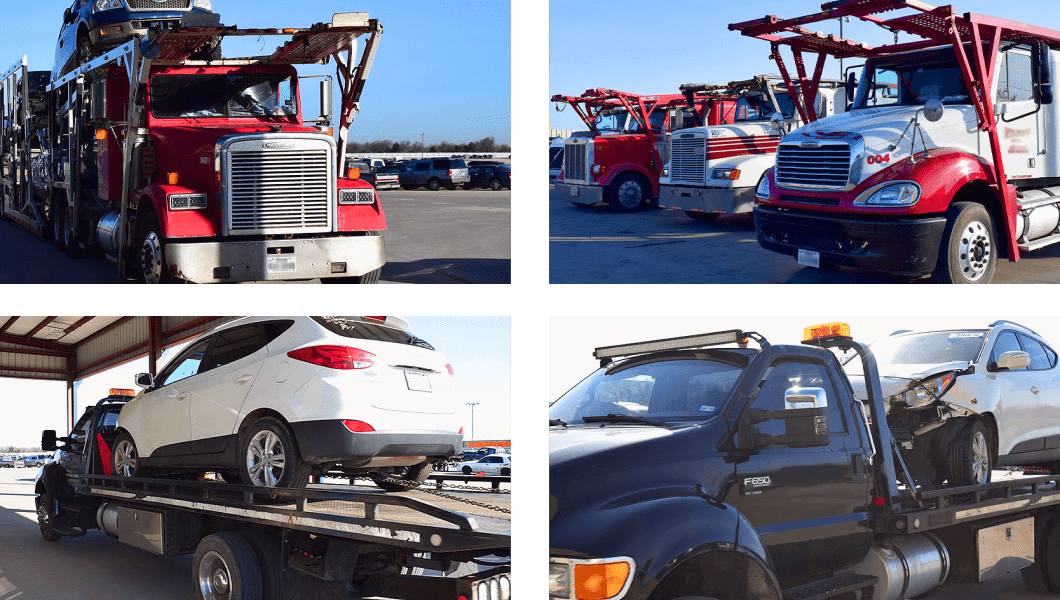
The likely trajectory is not a full pivot but a hybrid ecosystem:
- Auctions remain for high-value, unique, or competitive units.
- Direct Buy clears the tail of low-value, commodity inventory.
- AI dynamically decides channel placement — each vehicle routed to the model with optimal recovery vs cost.
By 2030, it’s plausible that most salvage operators will run dual-channel models, with 30–40% of units moving through Direct Buy equivalents. That could reshape not just auction houses but also insurers’ loss-recovery planning, dismantlers’ sourcing strategies, and even the pricing of collision coverage.
Strategic Recommendations
Navigating this shift requires a clear-eyed strategy for each player in the ecosystem, a delicate balancing act between seizing new efficiencies and preserving established value.
For insurers, the path forward is one of selective embrace. Direct Buy presents a powerful tool for streamlining the disposition of older, low-value total losses, where every day saved on cycle time translates directly to improved cash flow. However, adoption must not be blind. Insurers should insist on full transparency into the pricing algorithms that set these fixed values to ensure they are truly market reflective.
The most sophisticated players will move beyond a single recovery metric, instead developing blended benchmarks that fairly measure the combined value of speed, cost, and final recovery across both auction and direct channels.
For buyers, particularly international dismantlers and bulk parts suppliers, this evolution opens a new chapter of strategic sourcing. Direct Buy becomes the go-to channel for predictable, volume-based acquisition of parts donors, enabling the efficient filling of containers with specific engines or body panels.
Yet, the savvy buyer will not abandon the auction block. Instead, they will adopt a dual strategy: using Direct Buy for foundational inventory while still scouring auctions for mispriced vehicles and unique arbitrage opportunities that the open market alone can reveal.
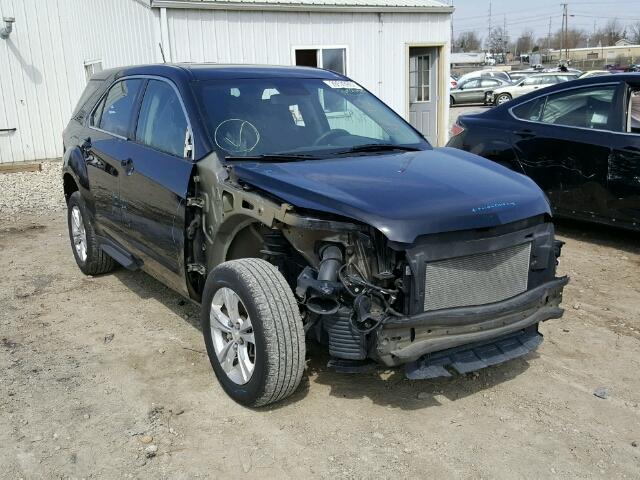
For the auction platforms themselves, the challenge is most complex. They must simultaneously innovate and protect their core. This means investing heavily in AI-driven dynamic pricing models that can set compelling Direct Buy values in real-time, and rapidly expanding this instant-offer capability to capitalize on global demand. But they must do so with surgical precision, carefully ring-fencing their high-value auction business.
The brand equity of the exciting, competitive auction must be protected at all costs, ensuring that Direct Buy is seen as a complementary tool for a specific segment, not a replacement that cannibalizes their most profitable business.
Finally, for policymakers, this shift demands a proactive rather than reactive approach. The focus should be on monitoring for consumer fairness—ensuring that total-loss payouts based on Direct Buy valuations are equitable—and on navigating the emerging complexities of cross-border compliance.
As fixed-price sales accelerate the flow of salvage vehicles to international markets, regulations may need to adapt, particularly around clear disclosures and the documentation of these new, streamlined transaction pathways.
A Market at Inflection
The shift toward Direct Buy is not just a footnote in Copart’s earnings call but intrinsically a structural signal. As more vehicles age into low-value status, as EVs increase total-loss frequency, and as global buyers demand certainty, the traditional auction-only model looks increasingly incomplete.
Direct Buy is the industry’s adaptation — a way to balance efficiency with liquidity, speed with salvage recovery. In time, it may prove as transformative as the move from physical lanes to digital auctions two decades ago. The lesson for stakeholders is simple: don’t mistake this for a minor channel experiment. It’s the new backbone of salvage remarketing, and the companies that master it will set the rules for the next decade of total-loss economics.
Sources: Copart Q4 2025 earnings transcript; CCC Crash Course 2024; Mitchell EV Collision Insights 2024; IAA market commentary; Automotive Fleet and Insurance Journal reporting on total-loss trends.
